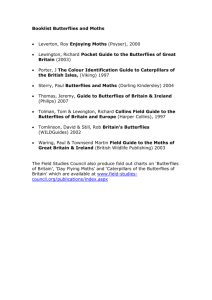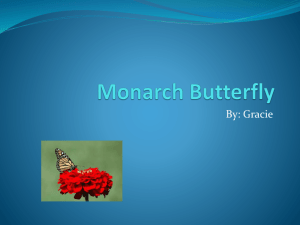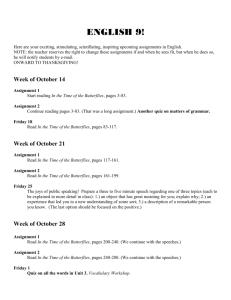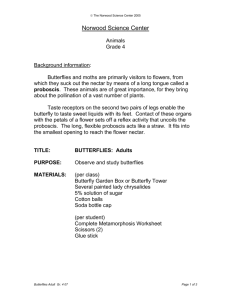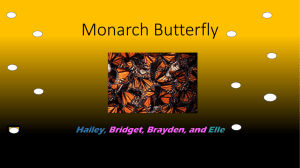How to Write a Lab Report
advertisement
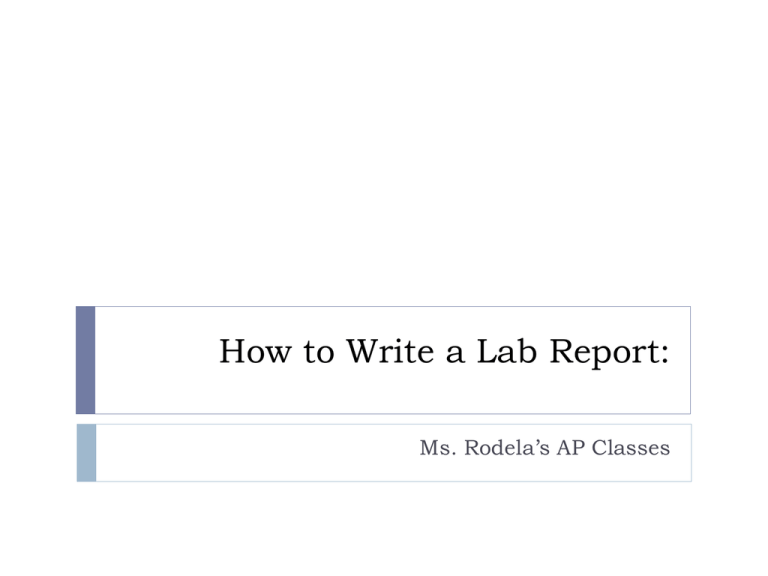
How to Write a Lab Report: Ms. Rodela’s AP Classes Facts about lab reports: A lab report is a concise and condensed version of all the hard work you did during your investigation. Often times you will look at a lab report you wrote and think “Seriously? I did ALL that work and its only # pages?” This feeling is totally normal. Well written lab reports convey a lot of information in a short amount of space. The important thing is to be concise. The single most important thing you can do is FOLLOW THE INSTRUCTIONS! Seriously, I’ve taken the time to type all this out because this is the way I want it.You can take the time to format correctly. Facts about lab reports: Lab reports are scientific writing. Scientific writing is different from creative writing and even different from the written analytical reports you are used to in an English class. While the basic tents of grammar are the same scientific writing has different rules. The basic rules are: 1) Write to your audience. 2) Tell the reader everything that is necessary and no more. 3) No one cares about your feelings. (Sorry if this sounds mean but this is science – SHOW ME THE DATA!) Overall structure of a lab report: The scope of various parts of a lab report resemble an hour glass. You want to start off general, looking at the big picture. Then relate this big picture to your study. Then talk about your study Then talk about your results Finally, relate your results to the big picture again. Parts of a lab report: Introduction: The introduction should: Introduce your reader to the big topic Explain why this big topic is important to you, your reader, and why it should be considered important by the whole world. Explain how your small research project relates to this big topic. Define your question (what were you investigating?) A few more notes on the introduction: Do not under any circumstances open with some cute opening “hook” like: Isn’t <THIS TOPIC> so important! Haven’t you ever wondered about… We need to do something RIGHT NOW! The “hook” is a writing device of English papers designed to elicit an emotional response in your reader. Remember this is science and we don’t care about your emotions or your reader’s emotions. A few more notes on the introduction: Do NOT use any text message, slang, or anything other than proper English grammar. If you turn in something that looks like this: “OMG, like this is SOOOO Important because it’s like cray-cray relevant to like the WHOLE world!” I will give you this look: O_o And then hand your report back to redo. Let’s look at an example: (HINT: This is bad) Butterflies have six-legs, two pairs of wings, eyes, and long antenna. Usually their wings are colorful but sometimes they are not. Butterflies are insects. Butterflies drink nectar from flowers. They are related to moths. Both moths and butterflies are members of the scientific order Lepidoptera. They are over 180,000 species in this order. Butterflies and moths are found all over the world. They live in deserts, rainforests, grass lands even cities. I will be talking about butterflies in my paper. Here is why this is bad: Write to your audience:You are writing a scientific paper. It is fair to assume that your reader knows what a butterfly is. Be Concise: If you are only talking about butterflies than only talk about butterflies. Butterflies have six-legs, two pairs of wings, eyes, and long antenna. Usually their wings are colorful but sometimes they are not. Butterflies are insects. Butterflies drink nectar from flowers. They are related to moths. Both moths and butterflies are members of the scientific order Lepidoptera.They are over 180,000 species in this order. Butterflies and moths are found all over the world. They live in deserts, rainforests, grass lands even cities. I will be talking about butterflies in my paper. Be Concise and know your audience: Okay so your are going talk about butterflies. I’ll figure that out when you start talking about them. Don’t tell me your are going to tell me about them. Here’s the good way to write that opening. Butterflies, order Lepidoptera, are found globally in a variety of habitats (valid citation). **Concise is good. More on citations later but a good scientific paper has tons of them. A few more notes on the introduction: Be covert not overt. You will need to explain your question and hypothesis but don’t say: “My question is…” or “My hypothesis is…” Instead include this in the writing of your introduction. Example: “Previous studies have shown that… but fail to address [topic you are studying]. This [topic you are studying] is an important aspect of [big picture topic].” Parts of a lab report: Materials and methods: This is were you get specific. You need to write well enough that someone who has never read your paper can reproduce your study based solely on your description here. This is a tricky section to write because you want to be specific, but not too specific. Now that you’re confused, here’s what I mean: Specific Twenty wild butterflies were captured using a standard butterfly net. Conveys all necessary information to repeat this step of the experiment. Add a “crikey!” and you’d be the crocodile hunter. TOO specific First we went to the place we know butterflies were. Then we approached them very slowly so we wouldn’t scare them off. Then we snuck up behind them and trapped them using our butterfly net. It took about half an hour to get them all. We finally captured twenty. Parts of a lab report: Results This is where you tell your reader what you found in clear, concise, facts. Refer to graphs and figures as evidence. Your graphs and figures should be readable and have captions that explain what the reader is looking at. Keep interpretation at a minimum, you’ll get your chance at explaining in the discussion. Parts of a lab report: Discussion/ Conclusions Here you are going to explain what your results mean. You are going to work backwards from the introduction, tying your results to the big picture topic you discussed earlier. Citations In science you need to back up every claim you make with evidence. The evidence can come from two different sources: Other people’s work: cite a journal or book Your work: cite your graphs and figures Follow the correct formatting (see next two slides) In Text Citations: The Harvard (author, date) system of referencing is used. In the text, give the author’s name followed by the year in parentheses: Sago (2000). If there are two authors use ‘and’: Baskin and Baskin (1998); but if cited within parentheses use ‘&’: (Baskin & Baskin 1998). When reference is made to a work by three or more authors, the first name followed by et al. should be used: Powles et al. (1998). If several papers by the same author(s) and from the same year are cited, a, b, c etc. should be used after the year of publication to differentiate between papers. In the list, references should be listed in alphabetical order. Cite the names of all authors. Do not cite the first three and use et al., even when there are seven or more authors. Personal communications, unpublished data and publications from informal meetings are not to be listed in the reference list but should be listed in the text (e.g. A. Smith, unpubl. data, 2000). Authors are responsible for the accuracy of the references. End of Report Reference list References should be listed in the following form: Journal Nusslein-Volhard C, Wieschaus E. 1980. Mutations affecting segment number and polarity in Drosophila. Nature 287: 795–801. Martienssen R. 1996. Epigenetic phenom- ena: paramutation and gene silencing in plants. Curr Biol 6:810–813. Book Gilbert SF, Epel D. 2009. Ecological developmental biology. Integrating epigenetics, medicine and evolution. Sunderland, MA: Sinauer Associates, Inc. 480 p. Wylie, C. C., Scott, D. & Donnovan, P. J. 1986. Primordial germ cell migration. In Developmental Biology, Vol. 2 (Ed. L. W. Browder), pp. 433–448. Plenum Press, New York. Finally… Writing in any sense is a learning process. The key to getting good at writing is simple: 1. 2. 3. 4. The information here is part one I’ll get more specific as the year moves on Write Have someone edit your work Rewrite Repeat steps 2 and 3 until you are good at writing That said we will practice scientific writing over the course of the school year

